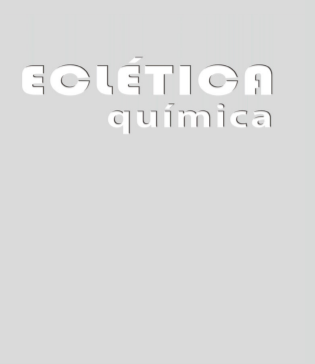Abstract
A qualitative spot-test and tandem quantitative analysis of dipyrone in the bulk drugand in pharmaceutical preparations is proposed. The formation of a reddish-violet color indicates a positive result. In sequence a quantitative procedure can be performed in the same flask. The quantitative results obtained were statistically compared with those obtained with the method indicated by the Brazilian Pharmacopoeia, using the Student’s t and the F tests. Considering the concentration in a 100 μL aliquot, the qualitative visual limit of detection is about 5×10-6 g; instrumental LOD ≅ 1.4×10-4 mol L-1 ; LOQ ≅ 4.5×10-4 mol L-1.
References
Brazilian Pharmacopoeia, 3rd ed., Organização Andrei Editora, São Paulo, Brazil, 1977, p 406-8.
I.M. Benseñor, São Paulo Med. J., 119 (2001) 190.
H. Ergün, D. A. C. Frattarelli and J. Aranda, J. Pharmaceut. Biomed., 35 (2004) 479.
P. Danielli, and M.B Leal, Rev. Bras. Farm., 84 (2003) 17.
Y. Bentur, and O. Cohen, J. Toxicol.-Clin. Toxic., 42 (2004) 261.
S. C. Pierre, R. Schmidt, C. Brenneis, M. Michaelis, G. Geisslinger, and K. Scholich, Br. J. Pharmacol., 151 (2007) 494.
G. Suarez-Kurtz , F.M. Ribeiro, R.C.E. Estrela, F.L. Vicente, and C J. Struchiner, Braz. J. Med. Biol. Res., 34 (2001) 1475.
Brasil, Anvisa, Agência Nacional de Vigilância Sanitária, Rev. Saúde Pública, 38 (2004) 748.
F.G.D. Vieira, J. M. Crubellate, I.G. Silva, and W.R. Silva, RAE eletron.,1 (2002) 1.
H. Senyuva, I. Aksahin, S. Ozcan, and B.V. Kabasakal, Anal. Chim. Acta, 547 (2005)73-7.
K.A. Sakiara, L. Pezza, C. B. Melios, H. R. Pezza, and M. Moraes, Farmaco, 54 (1999) 629.
J. L. F. C. Lima, S. M. O. Sá, J. L. Santos, and E. A. G. Zagatto, J. Pharmaceut. Biomed., 32 (2003)1011.
L. H. Marcolino Jr, R. A. Souza, O. Fatibello Filho, and F.C. Moraes, Anal. Lett., 38 (2005) 2315.
A.V. Pereira, L. Penckowski, M. Vosgerau, and M. F. Sassá, Quím. Nova 25 (2002)553.
A. P. Nascimento, M. G. Trevisan, E. R. M. Kedor-Hackmann, and R. J. Poppi, Anal. Lett., 40 (2007) 975.
J. S. Albuquerque, V. L. Silva, F. Lima, A. Araújo, and M. C. B. S. M.Montenegro, Anal. Sci., 19 (2003) 692
T. R. L. C. Paixão, C. R. Matos, and M. Bertotti, Talanta, 61 (2003) 725.
E. P. Medeiros, S.L. Castro, F. M. Formiga, S. R. B. Santos, M. C. U. Araújo, and V. B. Nascimento, Microchem. J., 78 (2004) 91.
L. H. Marcolino Jr, V. G. Bonifácio, and O. Fatibello Filho, Quím. Nova, 28 (2005) 783.
M. F. S Teixeira, L. H. Marcolino Jr., O. Fatibello Filho, E. R. Dockal, and E. T. G. Cavalheiro, J. Braz. Chem. Soc., 15 (2004) 803.
P. L.Weinert, L. Pezza, and H.R. Pezza, J. Braz. Chem. Soc., 18 (2007) 846
F. Feigl, Spot Tests in Organic Analysis, 7th ed., Elsevier, Amsterdan, 1966, p. 434-36 and 635.
L. Pezza, M. Tubino, C. B. Melios, and H. R. Pezza, Anal. Sci., 16 (2000) 313.
K. Eckschlager, Errors, Measurement and Results in Chemical Analysis, Van Nostrand Reinhold Company, London, 1972, p. 109-120.
P. Karrer, Organic Chemistry, 4th ed.; Wiley, New York, 1950, p. 798.
P. E. Georghiou, and C.K. Ho, Can. J. Chem., 67 (1989) 871

This work is licensed under a Creative Commons Attribution 4.0 International License.
Copyright (c) 2018 Eclética Química Journal





